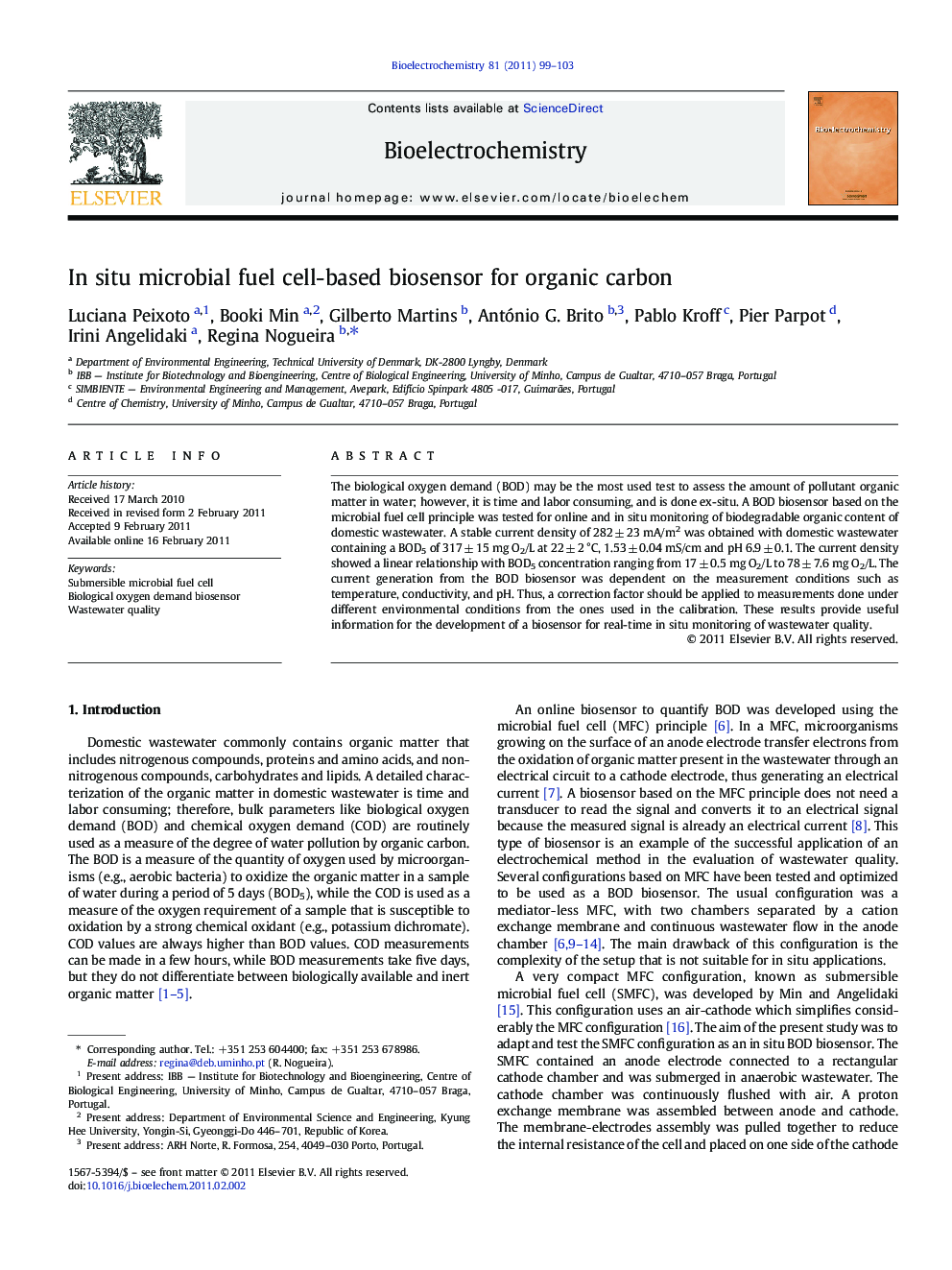| Article ID | Journal | Published Year | Pages | File Type |
|---|---|---|---|---|
| 1268302 | Bioelectrochemistry | 2011 | 5 Pages |
The biological oxygen demand (BOD) may be the most used test to assess the amount of pollutant organic matter in water; however, it is time and labor consuming, and is done ex-situ. A BOD biosensor based on the microbial fuel cell principle was tested for online and in situ monitoring of biodegradable organic content of domestic wastewater. A stable current density of 282 ± 23 mA/m2 was obtained with domestic wastewater containing a BOD5 of 317 ± 15 mg O2/L at 22 ± 2 °C, 1.53 ± 0.04 mS/cm and pH 6.9 ± 0.1. The current density showed a linear relationship with BOD5 concentration ranging from 17 ± 0.5 mg O2/L to 78 ± 7.6 mg O2/L. The current generation from the BOD biosensor was dependent on the measurement conditions such as temperature, conductivity, and pH. Thus, a correction factor should be applied to measurements done under different environmental conditions from the ones used in the calibration. These results provide useful information for the development of a biosensor for real-time in situ monitoring of wastewater quality.
Research highlights► Electrochemically active biofilms transfer electrons to electrode surface. ► Carbon content of the wastewater as the electron donor to the microorganisms. ► Different concentrations of Biological Oxygen Demand of the wastewater traduced in different maximums of the current density in a MFC. ► Submersible Microbial Fuel Cell can act as a BOD biosensor.
